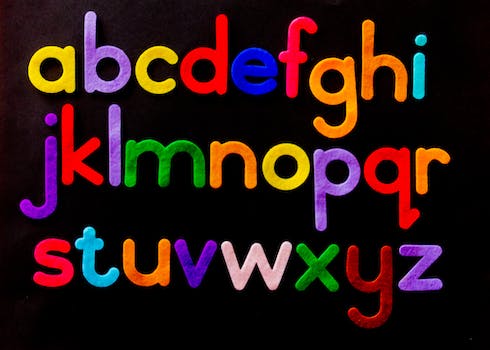-
Table of Contents
- The Art of Alphabet Design: A to Z
- The History of Typography
- The Anatomy of a Letter
- Designing the Perfect Typeface
- Modern Trends in Alphabet Design
- Case Studies in Alphabet Design
- Key Takeaways
- Q&A
- Q: What is the difference between a typeface and a font?
- Q: How can designers choose the right typeface for their projects?
- Q: What role does typography play in branding and marketing?
- Q: How has technology impacted the field of typography?
- Q: What are some emerging trends in alphabet design?

Alphabet design is a fascinating field that combines creativity, typography, and visual communication. From A to Z, each letter in the alphabet has its own unique characteristics and design elements that make it stand out. In this article, we will explore the intricacies of alphabet design, from the history of typography to modern trends in lettering. Let’s dive in!
The History of Typography
Typography, the art and technique of arranging type to make written language readable and appealing, has a rich history that dates back to ancient civilizations. The invention of the printing press in the 15th century revolutionized the way text was produced, leading to the development of various typefaces and fonts. From the elegant serifs of Times New Roman to the sleek sans-serifs of Helvetica, typography has evolved over the centuries to reflect changing design trends and cultural influences.
The Anatomy of a Letter
Before we delve into the specifics of alphabet design, it’s important to understand the basic anatomy of a letter. Each letter is composed of various parts, including the stem, bowl, ascender, descender, and serif. These elements come together to create a harmonious and visually appealing form that is essential for effective communication.
Designing the Perfect Typeface
When it comes to creating a new typeface, designers must consider a variety of factors, including legibility, readability, and aesthetic appeal. The spacing between letters, known as kerning, is crucial for ensuring that text is easy to read and visually pleasing. Additionally, the x-height, or the height of lowercase letters relative to uppercase letters, plays a key role in determining the overall look and feel of a typeface.
Modern Trends in Alphabet Design
In recent years, there has been a resurgence of interest in hand-lettering and calligraphy, as designers seek to add a personal touch to their work. From custom wedding invitations to logo design, hand-lettered typefaces are in high demand for their unique and artistic qualities. Additionally, the rise of digital design tools has made it easier than ever for designers to experiment with different styles and techniques, leading to a diverse range of typefaces and fonts available on the market.
Case Studies in Alphabet Design
One notable example of innovative alphabet design is the Google Fonts project, which offers a wide selection of open-source typefaces for designers to use in their projects. By providing free access to high-quality fonts, Google has democratized the world of typography and empowered designers to create beautiful and engaging content. Another case study is the work of renowned typographer Jessica Hische, whose intricate and detailed lettering has earned her a loyal following among design enthusiasts.
Key Takeaways
- Typography has a rich history that dates back to ancient civilizations.
- Understanding the anatomy of a letter is essential for effective alphabet design.
- Modern trends in typography include a focus on hand-lettering and digital design tools.
- Case studies in alphabet design highlight the importance of creativity and innovation in the field.
Q&A
Q: What is the difference between a typeface and a font?
A: A typeface refers to the overall design of a set of characters, while a font is a specific style or weight within that typeface.
Q: How can designers choose the right typeface for their projects?
A: Designers should consider factors such as readability, legibility, and aesthetic appeal when selecting a typeface for a project.
Q: What role does typography play in branding and marketing?
A: Typography is a crucial element of branding and marketing, as it helps to convey a brand’s personality and message to consumers.
Q: How has technology impacted the field of typography?
A: Technology has revolutionized typography by making it easier for designers to create and distribute typefaces digitally.
Q: What are some emerging trends in alphabet design?
A: Hand-lettering, variable fonts, and experimental typefaces are some of the emerging trends in alphabet design today.






